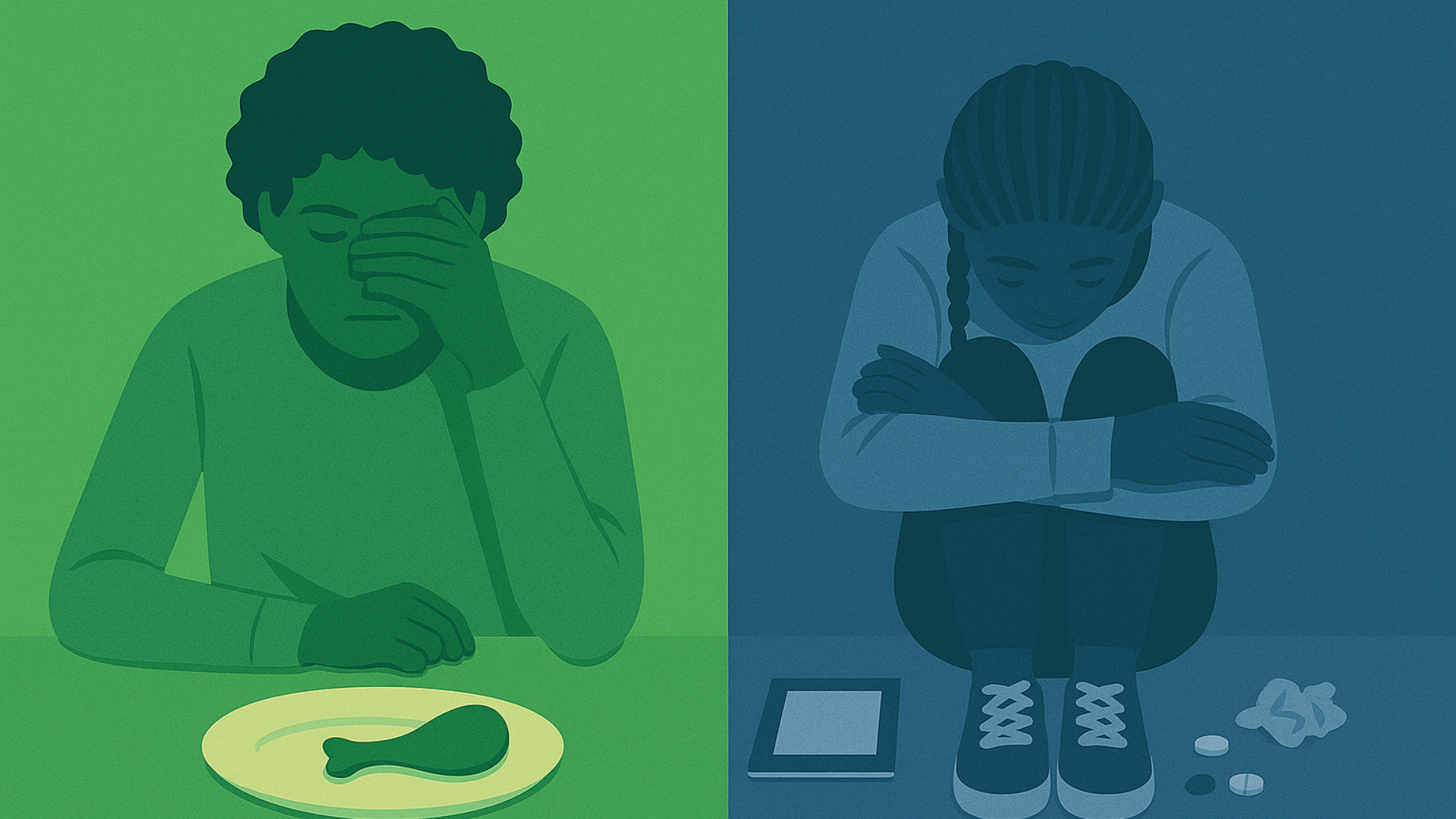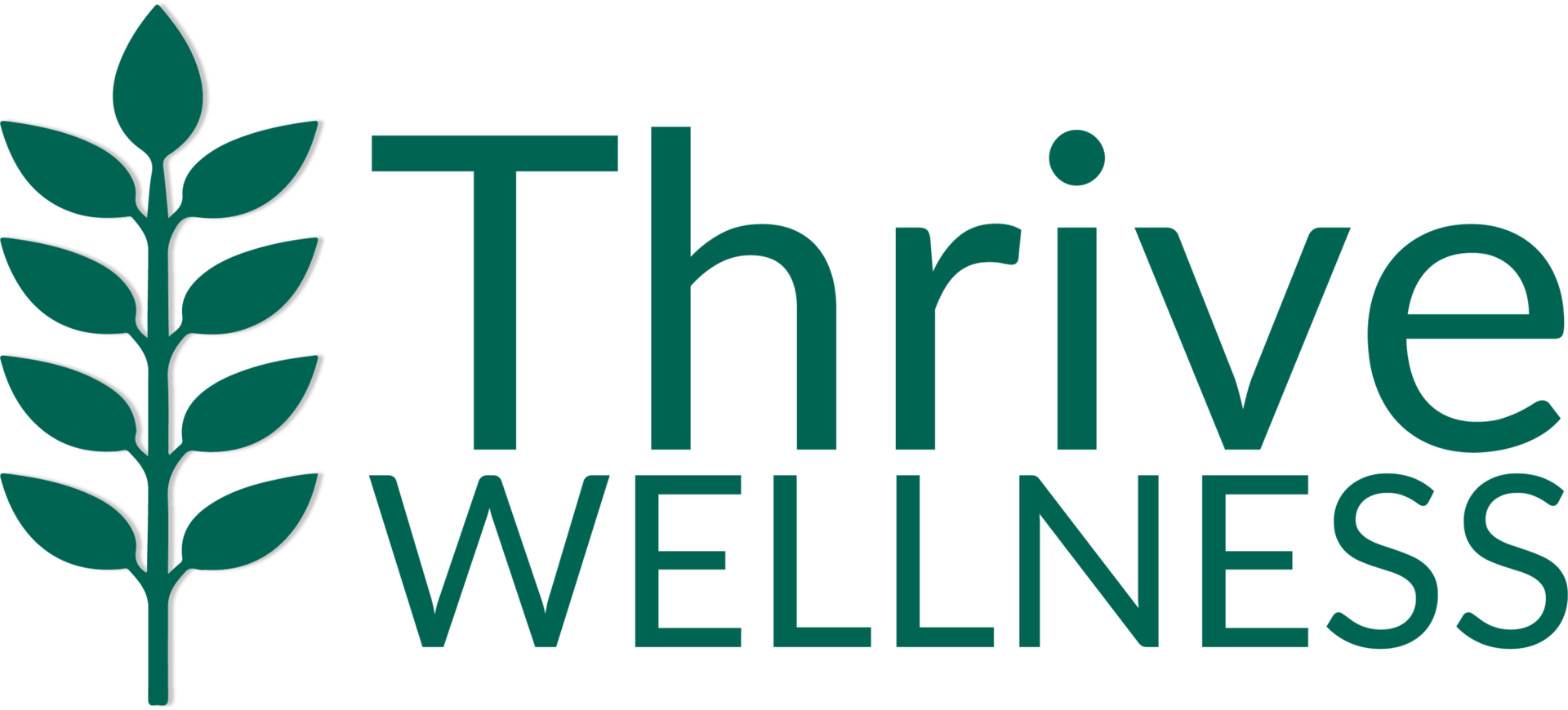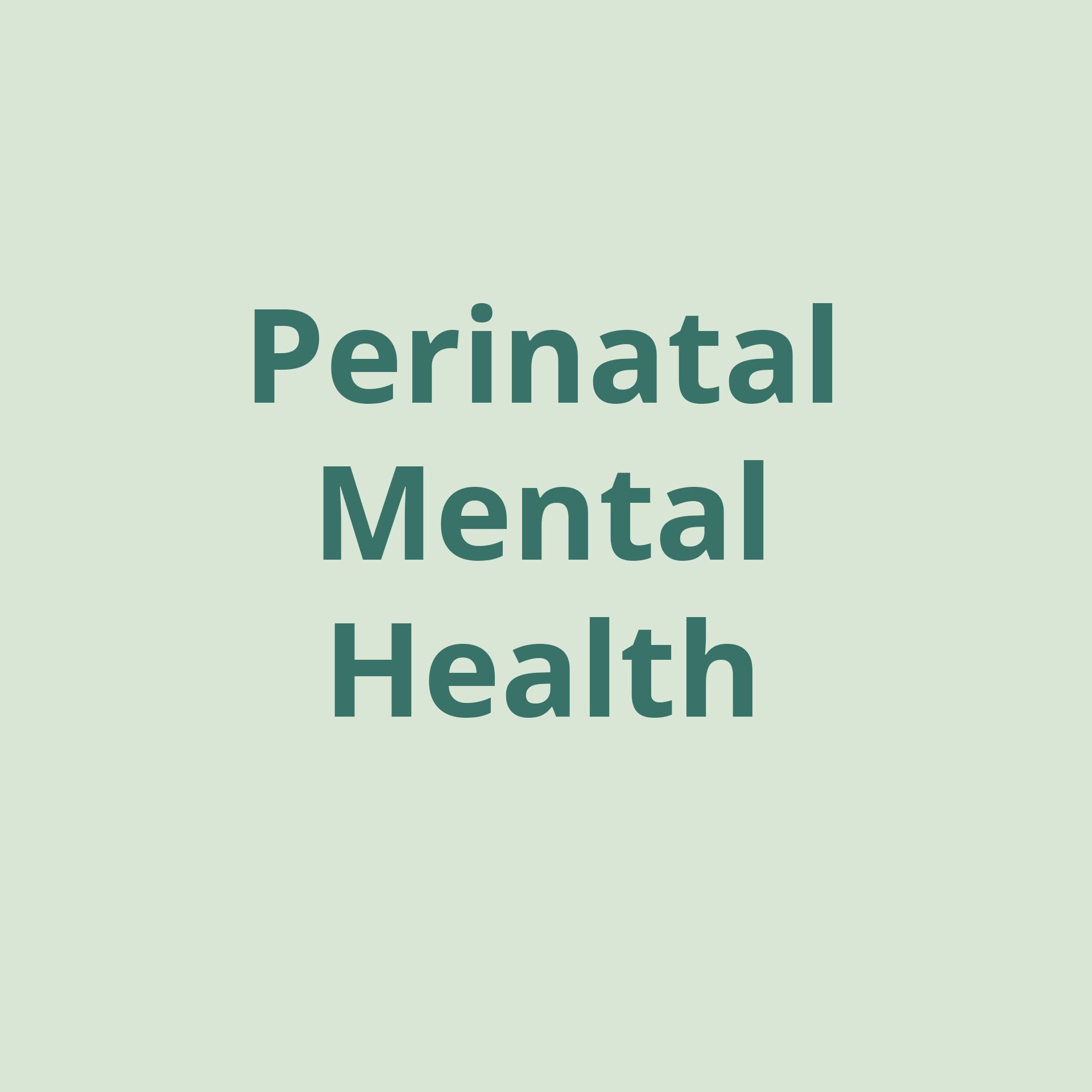Eating Disorders and Gastrointestinal Issues: A Two-Way Relationship

By Thrive Reno’s Primary Care Physician, Family Medicine Stephanie Wright, M.D.
WHAT ARE DISORDERS OF THE GUT-BRAIN INTERACTION (DGBI)?
Many individuals with eating disorders also have gastrointestinal issues, especially irritable bowel syndrome (IBS). IBS is considered to be a disorder of gut-brain interaction (DGBI). Also known as functional gastrointestinal disorders, DGBI serves to categorize a variety of digestive system disorders that can’t be explained by structural or tissue abnormalities within the gut.
Types of DGBIs include:
- Irritable bowel syndrome (IBS)
- Functional heartburn
- Functional constipation
- Functional abdominal pain (FAP)
- Functional diarrhea
DGBIs are characterized by:
- A disturbance in normal bowel motility, or the movement of food through the digestive tract
- Hypersensitivity of the intestine to pain in response to stimuli
- A “leaky gut,” which describes changes to the permeability of the intestine in which bacteria can pass or leak through the walls of the intestine
SHARED SYMPTOMS OF DGBIs AND EATING DISORDERS
A variety of gastrointestinal problems are very common with eating disorders. As such, the symptoms of DGBI and eating disorders sometimes overlap.
Commonly shared symptoms of DGBIs and eating disorders include:
- Early satiety, or feeling full after eating only a small amount
- Constipation
- Diarrhea
- Nausea
- Heartburn
- Difficulty swallowing
- Bloating
- Upper abdominal discomfort
When a DGBI is present, examination by endoscopy or biopsy isn’t able to identify the physical cause, so DGBI diagnoses are based on symptoms. Some of these symptoms are associated with an eating disorder, while others can be due to a coexisting DGBI, such as IBS. With both eating disorders and DGBIs, the severity of one’s symptoms and their recovery can be impacted by stress, their psychological state, and the quality of social support they have. When individuals with eating disorders also experience a DGBI, IBS is most commonly the gastrointestinal concern.
PREVALENCE AND RISK FACTORS OF IBS
It’s estimated that as many as 20% of Americans suffer from IBS . Unfortunately, IBS doesn’t have a known cause, but there are some common risk factors. Individuals with IBS are more likely to have experienced stressful or traumatic events in early childhood, struggle with depression or anxiety , and/or have food sensitivities or intolerances.
It’s important to note that IBS isn’t caused by food. Certain foods can, however, provoke IBS symptoms, which varies by individual. The stress of experiencing digestive issues and the altered gut-brain response can contribute to problems associated with IBS.
Some of the IBS symptoms more directly related to eating disorders can be due to the eating disorder behaviors themselves. For example, early satiety and constipation can be attributed to chronic food restriction, bloating and abdominal pain can be brought on by binge eating, and heartburn and nausea can be related to purging.
THE RELATIONSHIP BETWEEN EATING DISORDERS AND GASTROINTESTINAL ISSUES
The connection between eating disorders and gastrointestinal issues is well known within the medical field. Research shows that 88-95% of individuals with eating disorders have at least one DGBI, and 44-58% of those have IBS, specifically. However, at this time, there isn’t clear evidence that one disorder directly causes the other.
Often, individuals develop disordered eating behaviors prior to experiencing symptoms of IBS. When this is the case, IBS may ramp up the progression of food restriction as individuals attempt to avoid eating foods that may trigger IBS symptoms.
Other times, symptoms of IBS may manifest before the onset of an eating disorder. In this scenario, IBS can prompt disordered eating behaviors, beginning with the tendency of individuals suffering from IBS to exclude foods from their diet that disturb digestion.
SOLVING GUT PROBLEMS THAT CO-OCCUR WITH EATING DISORDERS
Gastrointestinal issues may encourage individuals to create unhealthy rules around eating, which can limit their ability to effectively nourish themselves while also severing their relationship with food and their bodies. As such, gut problems can pose a serious threat to eating disorder recovery. Fortunately, there are a variety of methods for improving gut problems that don’t involve hyper-focusing on one’s diet.
For individuals experiencing eating disorders, a multidisciplinary treatment team is necessary to mitigate eating disorder behaviors. The team should include a registered dietitian who can create a nutrition plan that addresses the eating disorder behaviors as well as the DGBI symptoms. Mental health support is also an essential component of recovery. A therapist may implement cognitive behavioral therapy (CBT) which can help decrease unhealthy food-related thought patterns and behaviors associated with both eating disorders and DGBI. As eating disorder behaviors decrease throughout treatment, the burden of DGBI symptoms generally also subsides. Thus, treating the eating disorder first also relieves most gut problems.
When appropriate, an individual’s treatment team may suggest certain changes to their diet with the intention of identifying triggering foods. Medication may also be prescribed to ease symptoms.
Gut problem treatment interventions may include:
- Incorporating probiotics: Compounds found in fermented foods that can help balance gut bacteria.
- Incorporating dietary fiber: Plant-derived substances that can promote healthy digestion for some.
- A brief trial of a low FODMAP diet : FODMAPs, which stands for fermentable oligo-, di-, mono-saccharides, and polyols, are foods that are difficult for many to digest, especially when they’re experiencing IBS. Briefly decreasing the amount FODMAPs one eats can help determine if FODMAPs are causing gut problems.
- A brief trial of a gluten-free diet: An approach that may be beneficial in finding out if gluten is contributing to gut problems.
- Medications: To treat chronic nausea, heartburn, or abnormal gut motility.
In these instances, one’s treatment team will closely monitor the individual to ensure that dietary interventions are in fact beneficial and not exacerbating any disordered eating habits. Any recommendation for a trial of an elimination diet should be considered with extreme caution and balanced with the risk of over-restriction, which can harm eating disorder recovery.
INTEGRATED TREATMENT FOR EATING DISORDERS AND GUT PROBLEMS
Taking a multifaceted treatment approach, Thrive’s team of eating disorder specialists includes primary care providers, registered dietitians, psychiatrists, therapists, and more. In collaboration, our experts work to heal patients’ relationships with their food and bodies, while addressing their physical, mental, and emotional well-being. Reach out to learn more about our eating disorder treatment programs .
About the Author
Thrive Reno Primary Care Physician, Family Medicine Stephanie Wright, M.D.
Dr. Stephanie Wright completed medical school and family medicine residency training at the University of Nevada, Reno School of Medicine, serving as chief resident during her last year of training. Subsequently, she taught resident physicians and medical students as a faculty member in the Department of Family & Community Medicine at the University of Nevada, Reno School of Medicine, and served as the medical director for the Physician Assistant Studies Program. Dr. Wright’s experience spans medical education as well as outpatient and inpatient clinical medicine with particular interests in pediatric and adolescent care, diabetes management, dermatology, and mental health.
As a member of Thrive Wellness Reno’s primary care team, she is excited to utilize and broaden her skills alongside a team of compassionate clinicians and support staff. Dr. Wright believes primary care is an integral component of an all-encompassing, team-based approach to promoting physical, psychological, and social well-being. She is passionate about providing care for individuals and their families and takes pride in serving people of all ages, races, ethnicities, and backgrounds.
Dr. Wright was born in Columbus, Ohio, where she completed her elementary through undergraduate education at Ohio State University. While growing up, she spent her summers visiting family in Reno and moved to Nevada to attend medical school in 2005. Dr. Wright enjoys spending time with her husband and sons, exploring the outdoors, watching Ohio State Buckeyes football, traveling, and reading.
The post Eating Disorders and Gastrointestinal Issues: A Two-Way Relationship first appeared on Thrive Wellness.








